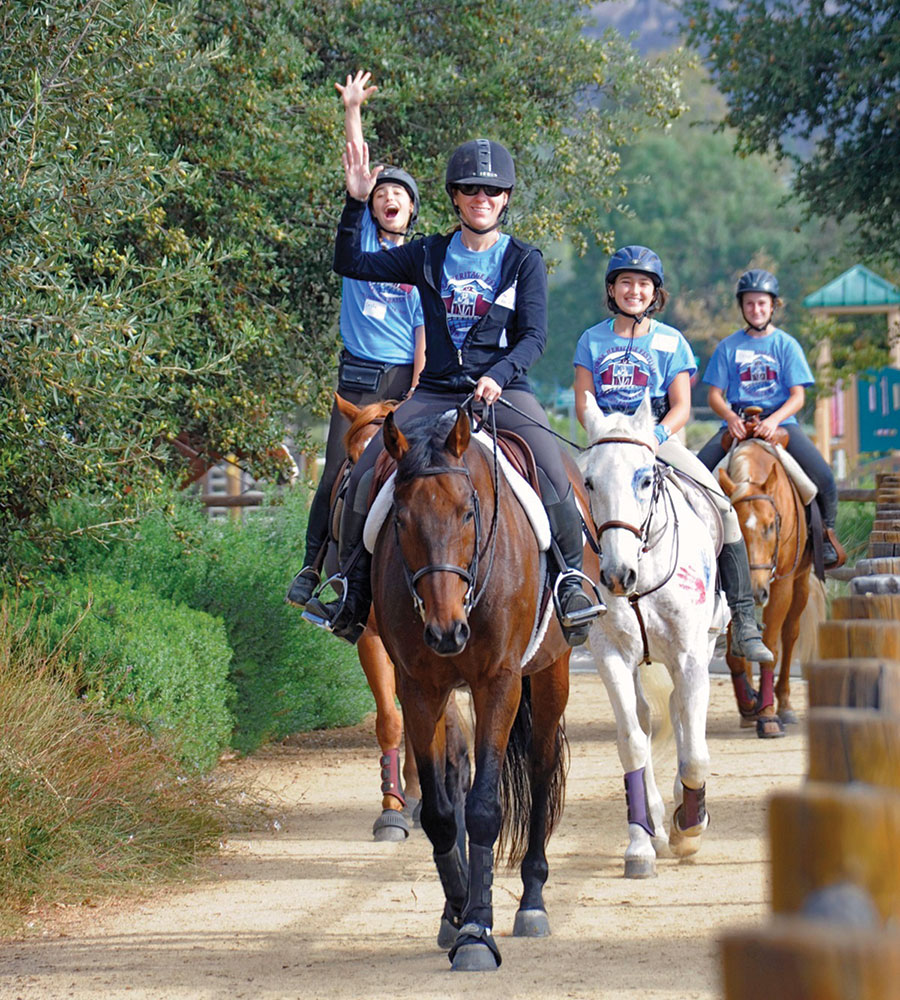By Denise O’Meara / for Equine Land Conservation Resource

Here’s a question that you may ask yourself every time that you load up your horses to trailer to the nearest equestrian accessible trail — wouldn’t it be nice to ride out my back gate, get on a local trail and head out to the park, the woods, the shore or anywhere that didn’t involve a fill-up or two? Some of you are very lucky and have that situation. The vast majority of us are not.
Community Planning — Are You In or Are You Out?
Urban and suburban community members need to see and understand horses and their riders. Unless they learn how joyful and useful horses are to humans, and how they can interact safely with non-equestrians, these folks can help deny horseback access to trails and other equine facilities.
Community members have a say in who uses their recreational spaces and trails via participation in the planning and administration of public greenspace. Non-equestrian citizenry can easily misunderstand or fear horses, resulting in the loss of potential or existing equine trails or other facilities
Community members may have other priorities for their public lands. The increasing popularity of youth sports may supersede the desire on the part of the community for riding trails and facilities. In many areas nationwide, extensive riding areas and facilities are under pressure by youth-oriented sports groups to extend existing soccer and other fields to create a regional style sports park, eliminating equine use. Local equine groups continue to advocate for equine use via the planning and public participation process.
Many cities that historically had equestrian trails and facilities are losing them rapidly, or have already lost them.
What You Can Do
You may not be able to acquire direct access to trails from your horse property, but you can help your community to understand and respond, favorably, to your equine community’s recreational and land needs.
Existing Trails:
With both private and public trails, it’s extremely important that horseback riders behave well — respect riding rules, trails conditions and other users.
Participate in the planning process. Learn what language is in the comprehensive plan and recreational plans that allow or disallow horses on public trails. Advocate for access by educating decision makers on the value of horses.
Seven Steps to Influencing Horse Friendly Planning is a great resource to learn more about planning and zoning: https://elcr.org/seven-steps-to-influencing-horse-friendly-planning-for-horsemen2/
Participate in trail maintenance activities. Share favorable information and events with the public via websites and social media.
New Trails:
Form or join organizations or clubs to get the equine community’s voice and needs heard by decision-makers. Participate in the master planning of trails and in the inclusion of language favorable to horse trails and facilities in the comprehensive plan and in protective ordinances.
Planning and Zoning Guide for Horse Friendly Communities is a valuable resource for understanding planning and zoning: https://elcr.org/planningandzoningguide/
Advocate for a comprehensive trail system that connects individual trails, both through public and private land. Educate yourselves, the public and community planners about the value of horses.
Help out with trail maintenance, and let decision-makers know that you have a plan for doing this long-term. You can do this via your organization or club, or join in with your local chapter of Backcountry Horsemen: www.bcha.org
Facilities:
It’s very important to have local riding, show and boarding facilities within the community. This gives people that do not own horse lands to ride, show, board their horses or just enjoy equine events. Facilities keep horses in the consciousness of the community.
Participate in planning. Make sure that facilities are both allowed and protected by language in the comprehensive plan and in zoning ordinances.
To learn more about planning for facilities see Local Planning and Zoning Practices Related to Equine Facilities: https://elcr.org/wp-content/uploads/2015/02/Local-Planning-and-Zoning-Practices-Related-to-Equine-Facilities.pdf
Work with your parks department to develop the financial and operational means to create or enhance equine facilities. Understand and be able to explain the benefits horses bring to your community.
The article Your Community Needs Your Horse is an excellent resource: https://elcr.org/your-community-needs-your-horse/
Your Horse Lands:
Don’t forget that horse properties in the community are important to protect, including yours.
Participate in Planning. Make sure that zoning changes in the vicinity of your horse properties are not adversely impacted by zoning development decisions.
More online: https://elcr.org
Leave a Comment
All fields must be filled in to leave a message.